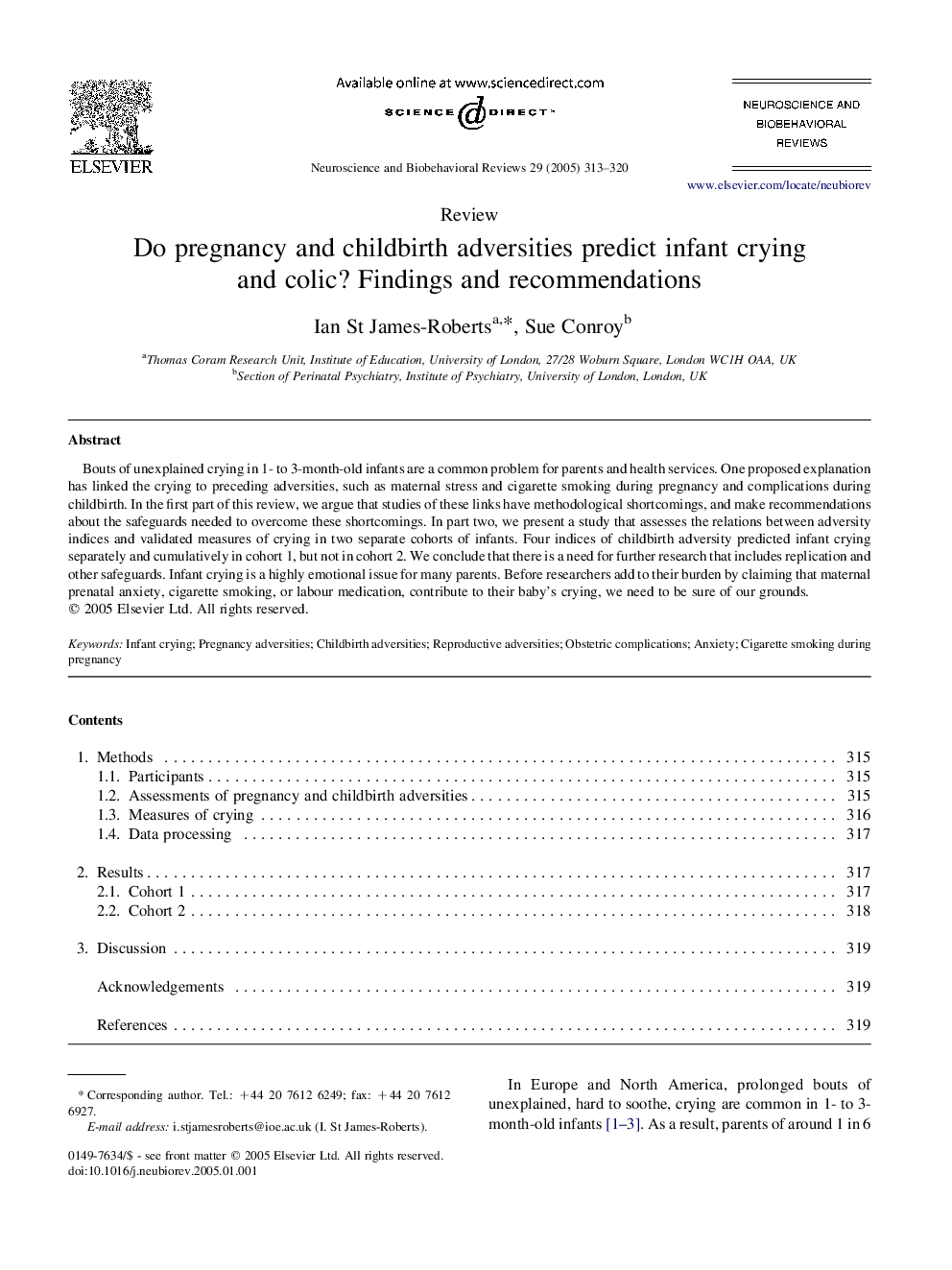| Article ID | Journal | Published Year | Pages | File Type |
|---|---|---|---|---|
| 10461952 | Neuroscience & Biobehavioral Reviews | 2005 | 8 Pages |
Abstract
Bouts of unexplained crying in 1- to 3-month-old infants are a common problem for parents and health services. One proposed explanation has linked the crying to preceding adversities, such as maternal stress and cigarette smoking during pregnancy and complications during childbirth. In the first part of this review, we argue that studies of these links have methodological shortcomings, and make recommendations about the safeguards needed to overcome these shortcomings. In part two, we present a study that assesses the relations between adversity indices and validated measures of crying in two separate cohorts of infants. Four indices of childbirth adversity predicted infant crying separately and cumulatively in cohort 1, but not in cohort 2. We conclude that there is a need for further research that includes replication and other safeguards. Infant crying is a highly emotional issue for many parents. Before researchers add to their burden by claiming that maternal prenatal anxiety, cigarette smoking, or labour medication, contribute to their baby's crying, we need to be sure of our grounds.
Related Topics
Life Sciences
Neuroscience
Behavioral Neuroscience
Authors
Ian St James-Roberts, Sue Conroy,
